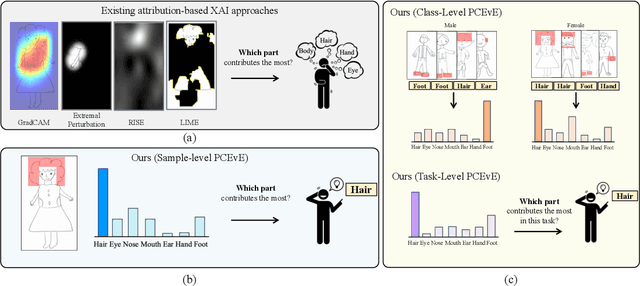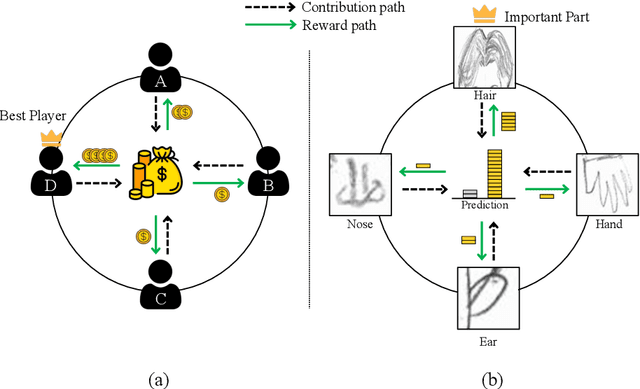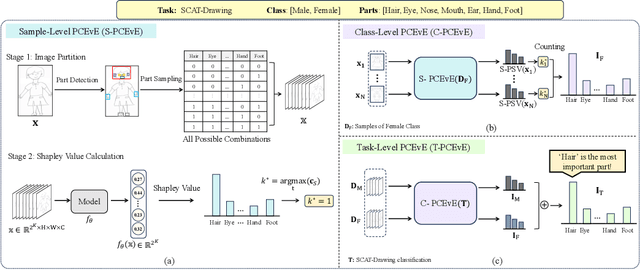Geo Ahn
PCEvE: Part Contribution Evaluation Based Model Explanation for Human Figure Drawing Assessment and Beyond
Sep 26, 2024



Abstract:For automatic human figure drawing (HFD) assessment tasks, such as diagnosing autism spectrum disorder (ASD) using HFD images, the clarity and explainability of a model decision are crucial. Existing pixel-level attribution-based explainable AI (XAI) approaches demand considerable effort from users to interpret the semantic information of a region in an image, which can be often time-consuming and impractical. To overcome this challenge, we propose a part contribution evaluation based model explanation (PCEvE) framework. On top of the part detection, we measure the Shapley Value of each individual part to evaluate the contribution to a model decision. Unlike existing attribution-based XAI approaches, the PCEvE provides a straightforward explanation of a model decision, i.e., a part contribution histogram. Furthermore, the PCEvE expands the scope of explanations beyond the conventional sample-level to include class-level and task-level insights, offering a richer, more comprehensive understanding of model behavior. We rigorously validate the PCEvE via extensive experiments on multiple HFD assessment datasets. Also, we sanity-check the proposed method with a set of controlled experiments. Additionally, we demonstrate the versatility and applicability of our method to other domains by applying it to a photo-realistic dataset, the Stanford Cars.
DEVIAS: Learning Disentangled Video Representations of Action and Scene for Holistic Video Understanding
Nov 30, 2023Abstract:When watching a video, humans can naturally extract human actions from the surrounding scene context, even when action-scene combinations are unusual. However, unlike humans, video action recognition models often learn scene-biased action representations from the spurious correlation in training data, leading to poor performance in out-of-context scenarios. While scene-debiased models achieve improved performance in out-of-context scenarios, they often overlook valuable scene information in the data. Addressing this challenge, we propose Disentangled VIdeo representations of Action and Scene (DEVIAS), which aims to achieve holistic video understanding. Disentangled action and scene representations with our method could provide flexibility to adjust the emphasis on action or scene information depending on downstream task and dataset characteristics. Disentangled action and scene representations could be beneficial for both in-context and out-of-context video understanding. To this end, we employ slot attention to learn disentangled action and scene representations with a single model, along with auxiliary tasks that further guide slot attention. We validate the proposed method on both in-context datasets: UCF-101 and Kinetics-400, and out-of-context datasets: SCUBA and HAT. Our proposed method shows favorable performance across different datasets compared to the baselines, demonstrating its effectiveness in diverse video understanding scenarios.
 Add to Chrome
Add to Chrome Add to Firefox
Add to Firefox Add to Edge
Add to Edge